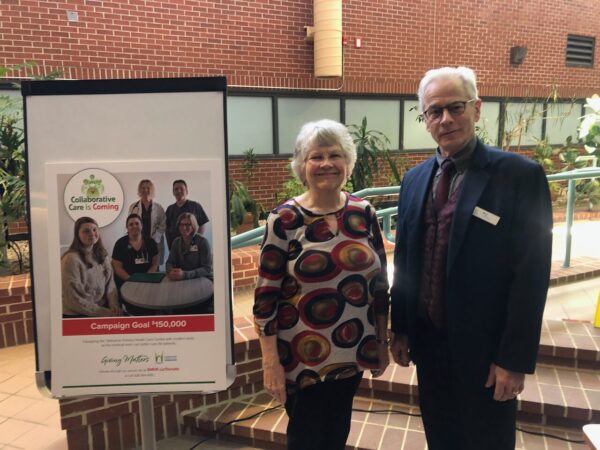The Department of Transportation and Infrastructure closed down Route 106 between Dorchester and Sackville just over two weeks ago, on April 1, due to a damaged culvert with a collapsing road around it, caused by runoff from heavy rain.
Since then, drivers in the know have been taking an alternate route between Sackville and Dorchester, via Woodlawn Road and King Street. But those not familiar with the area, have had more difficulty.
Tantramar councillor Debbie Wiggins-Colwell lives not too far from the main intersection where the 106 passes through the heart of Dorchester, where DTI has elected a large sign warning of a road closure in 4.6 kilometers.

Wiggins-Colwell points out the obvious problem. “We’ve got no detour signs,” she says, slightly exasperated. “We’ve got all kinds of ‘road closed’ signs, but not telling people where to go.”
Wiggins-Colwell says numerous drivers have found themselves driving the 4.6 kilometres up to the actual road closure, where the 106 crosses Two Mile Brook, in search of directional signage showing them where to go, only to discover they have to turn back.
When she’s called DTI about the problem Wiggins-Colwell says she’s been told that the department has just run out of detour signs. “Which just doesn’t make any sense to me,” says the Tantramar councillor and former village mayor. “I know roads have to be fixed, but please tell people where they have to have to detour… This is very confusing for everybody.”

CHMA reached out to a DTI spokesperson Jason Hoyt to ask about the lack of signage. Previously, Hoyt had told CHMA that a signed detour was available via Woodlawn Road and King Street, but this time Hoyt said “the decision to install permanent signage for the alternate route was delayed until a full assessment could be completed.”
Hoyt did not confirm whether or not DTI is experiencing a shortage of detour signage, but did say that signs to indicate the alternate route would be added, “after the full assessment concluded damage to the culvert on Route 106 was significant enough to warrant a long-term detour.”
Hoyt also said DTI is “beginning discussions with an engineering consultant to determine next steps,” on the repair of the damaged culvert and collapsing road.
Memramcook-Tantramar MLA Megan Mitton says someone from her office spoke with DTI on Tuesday. “This is quite a delay to not have detour signage,” said Mitton by phone. The MLA is also concerned about the length of time estimated for the closure to be repaired.
According to 511.gnb.ca, the road will be repaired by May 31, which Mitton says sounds like “a really long time.”
She’s heard from DTI that “there are challenges in terms of doing this work” because it require permits from the federal Department of Fisheries and Oceans, due to its impact on a waterway. “It’s looking like this is going to take a little while to fix,” says Mitton, “because they weren’t ready to go when this happened.”
“This issue on the 106 with the culvert and the road losing its structural integrity was foreseeable,” says Mitton. “And that is what’s so frustrating about a lot of things that happen when it comes to our roads and bridges.”
Mitton says her office was in contact with DTI about the state of the culvert last year, and she was told back then it was on the list for 2025.
Concern for conditions on Woodlawn Road
The longer that the repair of the 106 takes, the longer people and their vehicles will be using Woodlawn Road and King Street, two roads that don’t normally see the kind of traffic that is on the 106.
“This is a major thoroughfare,” says Wiggins-Colwell. “It’s the main road to get to the prison, to get to Fort Folly, to get to AIL.” And now she says many locals are concerned for the state of Woodlawn Road under new traffic.
“It’s deteriorating faster than it should be,” says Wiggins-Colwell. “It’s a no-win situation with the traffic on Woodlawn compared to the 106.”
Mitton says that when she’s raised specific road issues with the province, she’s been told they are following an asset management plan, an answer she finds frustrating.
“If you maintain things earlier on, then it costs less over the long term,” says Mitton. “That doesn’t work if you let some of your assets go into complete disrepair.”
“There needs to be some catching up with some deferred maintenance,” says Mitton, “because there are things that have been put off, and it creates safety hazards. And I don’t think that the way they’re doing it is serving New Brunswickers.”



















